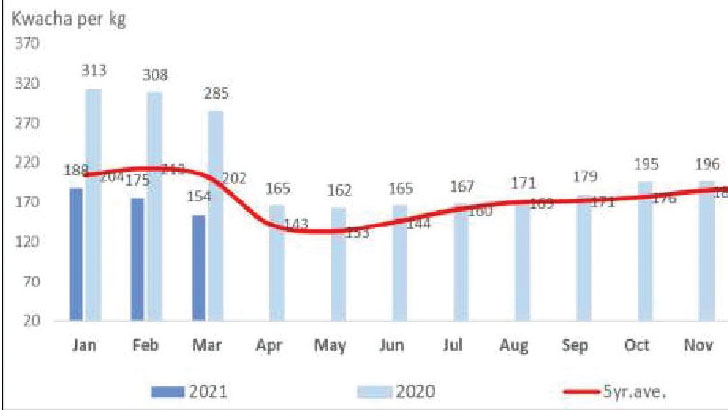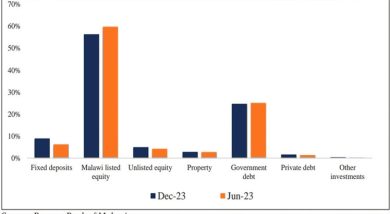Informal maize imports On the rise, says fewsnet
Informal maize imports have remained above average levels in recent months, with the Famine Early Warning Systems Network (FewsNet) figures showing that in March alone, 5 813 metric tonnes (MT) of maize were informally imported.
In its April 2021 Malawi Food Security Outlook Update, FewsNet observes that maize imports, which are mostly from neighbouring Zambia through the Mchinji Border, were 26 percent higher than the previous month and 89 percent above average.
Reads the update in part: “Throughout the recently concluded consumption and marketing year from April 2020 to March 2021, net imports totalled 40 000MT, which is 120 percent above five-year average levels of 18 000 MT.

“Meanwhile, informal exports totalled 707MT in March, 17 percent lower than the previous month and 27 percent below average. Most exports exited through Muloza Border into Mozambique.”
Reacting to the development yesterday, agriculture development policy analyst Tamani Nkono-Mvula said it is surprising that traders are importing the staple grain when the country has surplus that it is also exporting.
He said: “We should be exporting maize and not smuggling maize into the country. We had bumper harvests and we had the export ban lifted.
“So, that could be because traders are smuggling their maize to meet their export demands or that since some areas experienced dry spells, the projection of bumper harvest this year could not yield.”
According to first round crop production estimates, the country is expected to produce 4.4 million MT of the maize, which is 42 percent above the five-year average and 29 percent above the estimated national requirement of 3.4 million MT.
In the 2019/20 season, maize production increased by 8.8 percent from 3.3 million MT in 2018/19 growing season to 3.6 million MT in the 2019/20 growing season.
Following the anticipated 2019/20 harvests, Grain Traders and Processors Association (GTPA) has been calling for a lift on the maize export ban due to huge maize stocks which the local market cannot consume.
In March this year, Ministry of Trade reacted by partially lifting the maize export ban to mop up last year’s maize stocks to create space for the anticipated more than one million MT surplus grain.
In an interview yesterday, Minister of Agriculture Robin Lowe said his ministry is not invoved in the maize trade.
However, Ministry of Trade director of trade Clement Kumbemba said it is surprising that informal maize imports have been rising despite the ministry issuing export permits of more than 130 000 MT .
He said: “Soon, we will be informing the nation for people to start applying for export permits from us,” he said.
Ironically, figures show that the association had about 60 000 MT at a time government was lifting the maize export ban for three months in March.
The Malawi Government imposed an uninterrupted maize export ban from 2011/13 until the end of 2017.
In early February 2018, government reintroduced the ban to preserve the national grain reserve and stem the impact of tighter domestic supplies.
Maize is an important crop in the country and as part of food, it contributes about 42.5 percent to the consumer price index, an aggregate basket for computing inflation.





